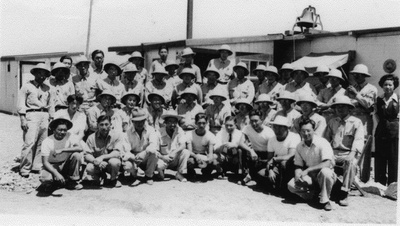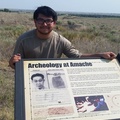In anticipation of upcoming Day of Remembrance (DOR) events in 2010, I looked over the DOR Calendar Listing published in the Feb. 5-18, 2010 Japanese American Citizens League (JACL) newspaper, Pacific Citizen. I was impressed by the nationwide spread and variety of events organized by Japanese American communities in Washington, DC; Cambridge, MA; Philadelphia, PA; Chicago, IL; and many West Coast cities to keep alive the history of the forced evacuation, relocation and imprisonment of America’s Japanese population during World War II. This miscarriage of justice was sanctioned by President Franklin D. Roosevelt in his Executive Order 9066, signed on February 19, 1942. This date took on the importance of annual DOR observances to make sure this proven civil rights violation of the U.S. Constitution is never forgotten and, hopefully, never committed again.
I imagine that the participation in DOR events takes on different meanings for each individual. In general we are all mindful of the historical significance of what EO-9066 unleashed upon us, but at least for me the day itself becomes a personal homage to departed family members, especially to those Isseis who suffered and endured in silence the indignity of having to deal with life’s highs and lows in a harsh foreign and confined environment. Never did I hear it from them directly, but much later had to learn of their tribulations second-hand, from cold archive records, and thankfully, from many wonderful books produced post-WWII
I’ve attended a few DOR pilgrimages to Manzanar, even though our family was imprisoned at Amache in Colorado. It is easier to attend from Los Angeles. I went to an Amache reunion in Las Vegas in 1994 and a pilgrimage to Amache via Colorado Springs in 1998, with sisters Sandi and Lynda and brother Victor in my RV camper.
The DOR event I attended this time was the 2010 Merced Assembly Center (MAC) Memorial and Monument Dedication event on the 20th of February. My older brother, Stanley, and I were just 2- and 3-year olds. That is why we, or at least I, have wrestled with the feelings of not having been old enough to be aware of the sufferings that directly affected our parents, grandparents and other older family members. Older now, I do recognize that we, as “Children of the Camps,” truly were affected.
Within the five months at MAC, my father served in the camp police force and our sister, Sandi Yoko Matoba, was born on August 5, 1942, a month before we were all loaded onto old train cars and pulled by different locomotives to the desolate flat southeastern corner of Colorado and the farmland town of Granada. From there we were trucked to the uncompleted military barrack camp named Amache. (see Amache Arrival) Shortly after, almost an equal amount of people came from the Santa Anita Assembly Center in Los Angeles, bringing the total peak population to over 7,000 concentration camp prisoners.
“Auntie Miye” of Cortez is the sister of my auntie Dorothy Yoshiko, wife of my farming uncle Hiroshi (see "A Sunday Drive - Mommy’s Birthday"). Miye (Kato) Baba, shown left in the photo with her eldest daughter, Shirley Frice, is very much like an aunt who always extended warm hospitality to me and my siblings whenever we visited the Okamura Cortez Farm after the war. Miye encouraged me to attend this DOR event, caringly flooding me with informative material, cyber-links and phone calls. How could I resist?
I’m glad she prevailed, because this pilgrimage allowed me to meet many nice people who knew our family during our shared Merced experience. It allowed me to reflect on the impact it had on our lives there and in Amache, and our lives after the War. It really helped to more deeply reflect and appreciate my departed family members.
For two years, the Cortez, Livingston and Merced JACLs and communities had prepared for this memorial dedication program and remembrance dinner, which was skillfully executed by hundreds of volunteers handling up to 1,500 attendees, 800 of which stayed for the dinner after the memorial dedication ceremony.
A little Japanese girl sitting amongst a pile of suitcases made up the bronze statue that was unveiled during the afternoon program. Also unveiled was the masonry memorial wall, consisting of bronze plaques with alphabetical letter reliefs spelling out the names of more than 4,600 MAC internees. Local Merced area children made and hung strings of colorful origami cranes on the statue.
To me, this wall has the same impact as the Memorial Wall honoring Vietnam veterans in Washington, DC. Just after the formal unveiling ceremony ended, people rushed forward to the wall of names to find their names along with names of family and friends, many long ago departed. Many took photographs. I went the day after. In the quiet morning there was a couple there taking tracings of names meaningful to them. We bowed in acknowledgement to each other and I took pictures of my family names and headed home to share.
Congressman Mike Honda, who was like me a child at Merced, and later at Amache, was one of the speakers for both the unveiling and dinner programs. He was quoted in the Pacific Citizen, making a statement about the importance of the DOR. “It is not a day to celebrate, nor a day to mourn. Rather, it is a day for reflection, dialogue and education of Americans on a very important event in our nation’s history.” That sums it up quite well for me. Thanks for the invite, Auntie Miye!
© 2011 Gary Ono










